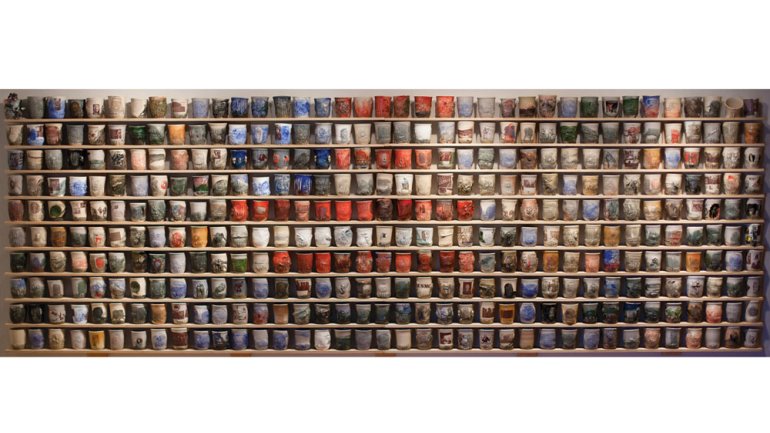Marks of Devotion
Marks of Devotion
Craft in America: “Service”
If you’re a craft-loving American, your heart will swell with pride watching “Service,” the 13th episode in the Craft in America series on PBS – pride in the military men and women profiled and pride in the role craft plays in their lives. This was a potentially fraught subject to take on, but the filmmakers achieve a beautiful balance, unwavering in honor and respect. There’s no sugarcoating the casualties of war: In this episode, which premiered in November, we meet veterans who turned to craft to heal from traumatic experiences, yet we also learn how military service has given some the opportunity to discover themselves as makers, through the GI Bill and the Army Arts and Crafts program. The final segment, on a man who makes saddles for military funerals at Arlington National Cemetery, is moving beyond words. ~Joyce Lovelace
The Creativity Cure: How to Build Happiness with Your Own Two Hands
By Carrie Barron and Alton Barron
Scribner, $16
“Creativity is the original antidepressant,” says this well-researched self-help book, and “creating things by hand or tending things by hand is an important part of wellness.” The authors, who are married, stand on solid ground in making these claims: She’s a psychiatrist who specializes in creativity, and he’s a hand surgeon. Their argument is that craft and other hands-on creative pursuits can be an effective alternative to talk therapy and medication in treating ailments such as depression and anxiety.
The book, which builds on their 2012 Creativity Cure volume but homes in on handwork, abounds in examples of people who’ve found happier lives by doing it, and it also tackles the fear and guilt that can keep people from taking creative action. Each chapter ends with a set of intriguing “prescriptions” to build creative capacity. The Creativity Cure is full of summarizing and bullet points, which may be useful or irritating, depending on the reader. But it makes a compelling case. ~Monica Moses
Fiber: Sculpture 1960 – Present
Edited by Jenelle Porter
Institute of Contemporary Art/Boston, DelMonico Books, Prestel, $60
Ignore the hubris of the claim that “Fiber: Sculpture 1960 – Present” is the first exhibition in four decades to address the work of artists “now under-recognized or long-forgotten,” and this thoughtful, visually beguiling catalogue of the same name is your reward. Fiber may have trod an uncertain path in contemporary art since 1960, but here luminaries such as Lenore Tawney, Diane Itter, and Claire Zeisler meet in dialogue with Anne Wilson, Xenobia Bailey, and Sheila Pepe, along with evidence of Sheila Hicks and Kay Sekimachi’s unflagging careers in the medium. Glenn Adamson’s rumination on the flaccid and T’ai Smith’s realignment of monumental fiber works within the discourse of tapestry rather than minimalist sculpture complete the experience. ~Perry A. Price




